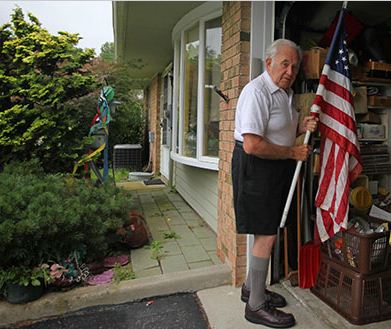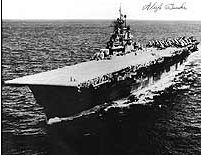This one is a bit of a stretch, and I have a reverse example of this approach from the business world that I will talk about at the end of this.
I will start with an uncontroversial example, and then progress to one that’s a little harder. Somewhere between trivia and common knowledge is the tactic that’s used by firefighters to put out forest fires. Do you know what they do? They start fires. Really. Fires need fuel to keep burning, so if the firefighters burn the portion of the forest that’s in the path of the larger forest fire, by the time it gets to that area, it’s already burned, and there’s no more fuel for the fire and it goes out. Stop the larger burning by starting (and containing) smaller fires. The trick in this one is to go through the logic of the outcome you want (stop the fire), and then to ask what techniques accomplish that, and while pouring water is a way to put it out, removing the fuel source is in many instances a better way. So ask what it will take to achieve an outcome, and if the current path isn’t working, ask if there’s another way.
64 years ago today World War II ended. This article in the paper today by Dan Barry talks about a man, Albert Perdeck, who was a soldier in that war and he was in the aircraft Bunker Hill that was attacked in 1945.
One of the primary points of the article is that people don’t talk about V-J day anymore, and a lot of people don’t even know what it stands for (Victory-over-Japan). I think there’s a lot of validity to Dan Barry’s observation that a lot of time has passed and celebrating victory over Japan has a very different ring to it than simply saying the end of WWII. Japanese/American relations are now very good and I expect people don’t want to stir up some of those awful memories, from Pearl Harbor to the atomic bombs.
For people who are unfamiliar with the timeline leading up to August 14th, hundreds of thousands of people had already died in the war. The United States led by President Harry S. Truman notified Japan that we had created a bomb that would blow up an entire city and that if they didn’t surrender, we would use it. They didn’t believe Truman and on August 6th we destroyed the city of Hiroshima, and when they didn’t surrender after that, Nagasaki was destroyed. Horrific doesn’t begin to describe those two bombings, but the reason it struck me as an example was that everyone wanted the war to stop, so many people had died already but that wasn’t ending the war, so Truman tried another more radical approach that amounted to killing people more people (sadly a LOT more people who weren’t soldiers) to stop the killing.
As I said, not wanting to stir up bad memories on this one, but with both the forest fire example and the WWII example, the tactic of doing more of something to stop a larger problem of that same something is a non-obvious approach to problem solving.
So my business example here is actually a case where a situation like this backfired for Vlasic pickles. People bought pickles at a pretty predictable rate. Then Vlasic and Wal-Mart teamed up to sell gigantic jars of pickles. I think Vlasic expected this to just be a great source of revenue from a great retailer and it would have a happy ending. Not for Vlasic. A little bit like the forest fire example, when these people bought the giant jar, it was basically two or three years of pickles for their household. And they are fine staying in a jar for a long time. So what happened was people stopped buying pickles at the grocery store and Vlasic had for all practical purposes put themselves out of business. Just as the firefighters burn the fuel in the larger fire’s path, Vlasic sold them so many pickles, they wouldn’t have an appetite for buying more for a long time.
People bought pickles at a pretty predictable rate. Then Vlasic and Wal-Mart teamed up to sell gigantic jars of pickles. I think Vlasic expected this to just be a great source of revenue from a great retailer and it would have a happy ending. Not for Vlasic. A little bit like the forest fire example, when these people bought the giant jar, it was basically two or three years of pickles for their household. And they are fine staying in a jar for a long time. So what happened was people stopped buying pickles at the grocery store and Vlasic had for all practical purposes put themselves out of business. Just as the firefighters burn the fuel in the larger fire’s path, Vlasic sold them so many pickles, they wouldn’t have an appetite for buying more for a long time.
I realize these are some unorthodox examples, but the point is that when you are trying to solve a problem, think about cause and effect and what other options you have, and know that some can be really great, while others will backfire if you don’t think them through.
-Ric

Leave a Reply